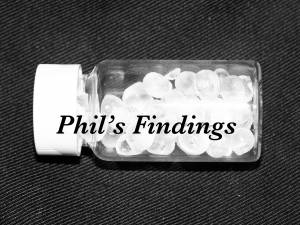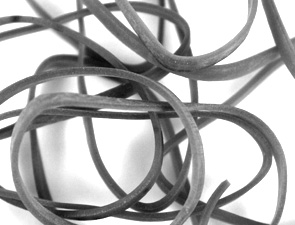Phil’s Findings #15: Rubber Bands
19 September 2011


Phil Howes, the Institute of Making’s post-doc researcher, shares his thoughts and findings as he delves into the world of materials. Check this space every second Monday for Phil's latest posting.
Most materials expand when heated. This is why the mercury in a thermometer rises with temperature, and it is why railway tracks are built with gaps between the ends of each rail. This expansion occurs because the atoms in the material gain energy and start to jiggle with excitement, bumping into each other. All this movement pushes the boundaries of the material, and causes the whole thing to expand, increasing in volume. This material expansion is a vital consideration when designing things which will be exposed to a wide variety of temperatures. For example, a car engine will be expected to work when you start the car on your driveway in sub-zero conditions, but it also needs to work when it becomes very hot on a long journey. The materials used in the engine need to be chosen and machined very carefully to allow this to happen. Very high performance engines, such as those in an F1 car, won’t actually start at ambient temperatures and need to be heated before they will work. This is because the pistons are so tightly fitted in the cylinders that the cylinder must expand before the piston can move.
There are, however, some rare exceptions to the contraction-with-cooling phenomenon. Water, for example, expands when it is cooled below 4°C, which is why if you leave a bottle of liquid in your freezer you may well find it will crack as the water becomes ice, and why bottles of milk left on the doorstep overnight will pop their lids if they freeze. Another interesting example is rubber bands. Rubber consists of long thread-like molecules called polymers intertwined like a tangle of spaghetti. When the rubber is stretched, these long chains are pulled into a straight line, however they are energetically happier as they were before, so they pull back. This gives the rubber its elasticity. When you heat rubber, instead of expanding like you would expect, it contracts. Like before, the heat causes the atoms in the rubber to get excited and start vibrating. However, because these atoms are part of a big chain of atoms, these jiggling atoms start banging into the sides of neighbouring chains, causing them to kink and shorten, pulling the whole structure together. Interestingly, the opposite is true, whereby if you stretch out an elastic band it will noticeably heat up.